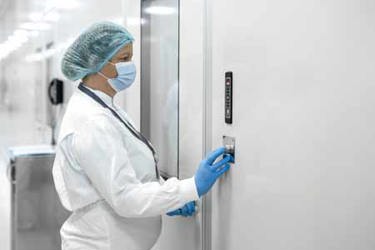Are Annex 1's CCS Requirements Still Challenging You?
By Xenia Dimont, GMP/GDP Inspector, GMP Compliance Adviser

Compared to the previous version of 2008, most of the content of the revised Annex 1 of the EU GMP Guide represents the long-established state of the art and reflects current practice. In this respect, regulatory expectations that have long been known from inspections are already fulfilled. However, some new requirements have also been introduced.
In summary, the following significant innovations can be highlighted:
- integration of ICH Q10 (Pharmaceutical Quality System)
- integration of ICH Q9 (Quality Risk Management)
- need for a holistic, site-wide contamination control strategy (CCS)
- adoption of new technologies (e.g., rapid microbiological methods)
- emphasizing the relevance of barrier technology and differentiating between various barrier systems
- inclusion of two new sub-chapters on form-fill-seal and single-use systems (SUS)
Selected innovations and amendments are presented in the following article. The main focus is on highlighting and evaluating changes compared to the previous version of Annex 1.
Pharmaceutical Quality System
The new version of Annex 1 augments the pharmaceutical quality system described in detail in chapter 1 of the EU GMP guideline with additional elements specific to sterile manufacturing, for example:
- consideration of processes in connection with the finishing, storage, and transport of sterile products
- appropriate access of QP to manufacturing and quality information
- sufficient knowledge and experience of the QP in the manufacture of sterile products and the associated critical quality characteristics
In addition, particularly important aspects that are already known are further emphasized in Annex 1. These include the seamless integration of quality risk management into the product life cycle, effective root cause analyses in the event of deviations, and the implementation of appropriate corrective and preventive actions (CAPAs). The responsibility and active role of management with regard to quality oversight is also emphasized. This underlines the importance of ownership and process understanding at all levels of management.
Quality Risk Management
Analogous to the pharmaceutical quality system, the new Annex 1 builds on the principle of quality risk management already anchored in the EU GMP Guide (see EU GMP Guide Part I Chapter 1 and Part III). The remarkable new aspect is that the revised Annex 1 emphasizes quality risk management as an integral part of sterile manufacturing and places it in the foreground. Quality risk management is accorded a key significance, with particular attention being paid to its proactive application.
All contamination-relevant aspects relating to processes, premises, equipment, etc., should be designed based on risk assessments. It is important to regularly evaluate results of risk management as part of ongoing quality management, in the event of changes or significant new problems as well as during execution of product quality reviews (PQR).
Contamination Control Strategy
The concept of contamination control is not entirely new in the context of the EU GMP Guide — the basic principles are already contained in Chapter 5 regarding cross-contamination and in Annex 2 regarding specific risks for biological products. However, the development of this concept has been furthered significantly in the revised Annex 1 with the contamination control strategy (CCS), and it represents one of the few new requirements in the revised Annex 1.
With the CCS, an additional quality assurance instrument has been introduced in the updated Annex 1, which is intended to enable the control of potential sources of contamination by microorganisms, endotoxins/pyrogens, and particles through a site-wide holistic approach and multimodal control.
To this end, by using QRM principles and a sound understanding of the processes and technologies, site-wide contamination risks, including potential interactions, are identified. Critical control points are defined, suitable prevention, monitoring, and control measures are taken, and all relevant results are considered in their entirety.
A holistic evaluation of the collective effectiveness of all measures and the continuous improvement of the CCS are conducted in pursuit of the ultimate goal: maximum sterility assurance.
Creating A Contamination Control Strategy
The initial implementation of an appropriate CCS poses a challenge for many companies. As the new version of Annex 1 does not provide any specific requirements in this regard, the decision regarding the conception and form of the CCS is at the discretion of the respective manufacturer, provided that all necessary elements are included and the purpose of the CCS formulated in the updated Annex 1 is thus fulfilled.
Based on the current findings, implementation as described below (which is structurally similar to the design of a site master file or validation master plan in the broadest sense) appears both appropriate and practicable:
Conception of the CCS as an overarching document:
- definition of the purpose of the CCS and its basic principles
- methodology for identifying relevant elements and critical control points
- list of the relevant elements identified
- identification of critical control points and associated monitoring measures
- assessment of existing elements and systems (such as existing risk analyses, change and deviation management, etc.) with regard to their suitability for integration into the CCS, for example through a gap analysis
- description of the approach to assess the collective effectiveness of all CCS measures
- procedures for keeping the CCS up to date and for continuous improvement of the CCS through ongoing and regular reviews (including definition of the review frequency)
- a list of the applicable referenced or subordinate documents, such as existing elements, systems, and documents, for example:
- risk analyses
- SOPs (e.g., for personnel qualification, supplier management)
- systems for environmental, personnel, and utility media monitoring
Integration of the above-mentioned CCS document into the (PQS) as a quality assurance tool with a focus on sterility assurance should involve:
- a well-structured, concise, and comprehensibly written document
- mutual links to other relevant PQS elements (such as QRM, PQR, CAPA, etc.), systems, and subordinate documents (risk analyses, SOPs, etc.)
- content and format according to chapter 4 of the EU GMP Guide and analogous to the other specification documents established in the company
Who Is Responsible For The Preparation, Review, And Approval Of The CCS?
As the CCS is a new requirement, there is as yet no experience of best practice regarding the definition of responsibilities for preparation, review, and approval. It is quite possible that the views on this allocation of roles could vary, particularly in the initial phase of monitoring. From a current perspective, the following allocation of roles appears to be obvious:
- The creation and development of the CCS is carried out under the leadership of the quality assurance department by a multidisciplinary team comprising representatives with specific expertise from all relevant departments.
- The key functions, including the head of manufacturing, the head of quality control, and the qualified person, are involved in the process either as authors or reviewers of the document.
- Final approval is granted by the management board, which thus fulfills its task of overall supervision on the one hand and its responsibility to provide the necessary resources for the CCS on the other.
Expectations For The First Inspections
The concept of the CCS was already presented in the first draft of the new Annex 1 in 2017. The revised draft of 2020 clearly showed that this is a significant new element that is likely to be included in the final version of the document. Accordingly, affected companies and facilities have had ample opportunity to familiarize themselves with the concept and make the necessary preparations. Thus, it is expected during the first inspections that a CCS has already been implemented or is about to be implemented.
In view of the fact that the CCS is comprehensive and far-reaching and demands new requirements in sterile manufacturing, it will take some time until sufficient practical experience has been gained before a generally recognized procedure or a so-called gold standard for the implementation of CCS emerges.
Note: This article reflects the author’s personal current interpretation of the newly revised Annex 1 and does not necessarily represent the view of other representatives of authorities and/or the competent authorities. Third parties cannot derive any rights or obligations from it.
This article is an excerpt from GMP knowledge contained in the online portal GMP Compliance Adviser, which provides in-depth information about GMP best practices and regulations with a focus on Europe, but also refers to the U.S., Japan, and many more (PIC/S, ICH, WHO, etc.).
About The Author:
 Xenia Dimont is a pharmacist and works as a GMP/GDP inspector for the Government of Upper Bavaria in Germany. Her tasks include carrying out official inspections of active pharmaceutical ingredient and medicinal product manufacturers in accordance with the German Medicinal Products Act (AMG) in Germany and in third countries, e.g., on behalf of the European Medicines Agency (EMA). Her field of activity also includes the monitoring of blood product manufacturers and distributors. Since 2020, she is head of the blood division in the Pharmacy Department of the Government of Upper Bavaria and is a member of the German GMP Inspectors Expert Group 06 "Blood/Blood Products." Since 2020, she has also been a speaker on GMP and GDP topics at various training events and conferences.
Xenia Dimont is a pharmacist and works as a GMP/GDP inspector for the Government of Upper Bavaria in Germany. Her tasks include carrying out official inspections of active pharmaceutical ingredient and medicinal product manufacturers in accordance with the German Medicinal Products Act (AMG) in Germany and in third countries, e.g., on behalf of the European Medicines Agency (EMA). Her field of activity also includes the monitoring of blood product manufacturers and distributors. Since 2020, she is head of the blood division in the Pharmacy Department of the Government of Upper Bavaria and is a member of the German GMP Inspectors Expert Group 06 "Blood/Blood Products." Since 2020, she has also been a speaker on GMP and GDP topics at various training events and conferences.
